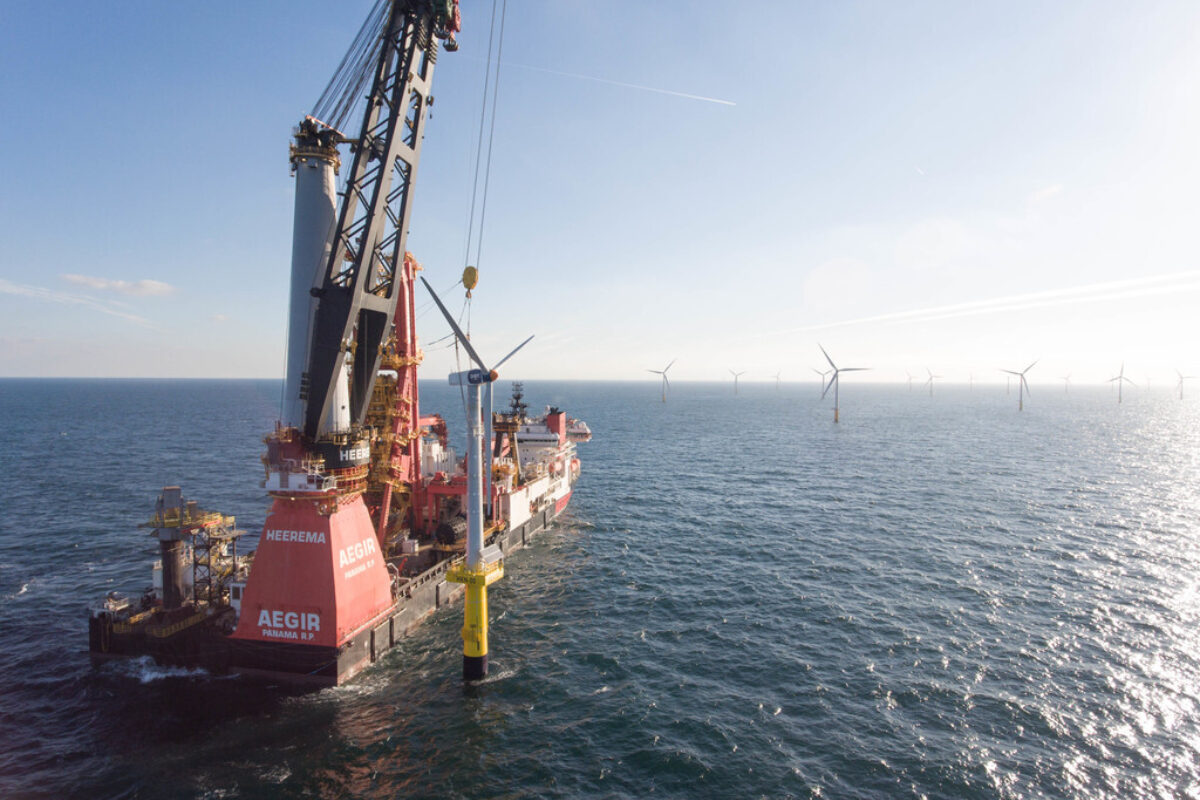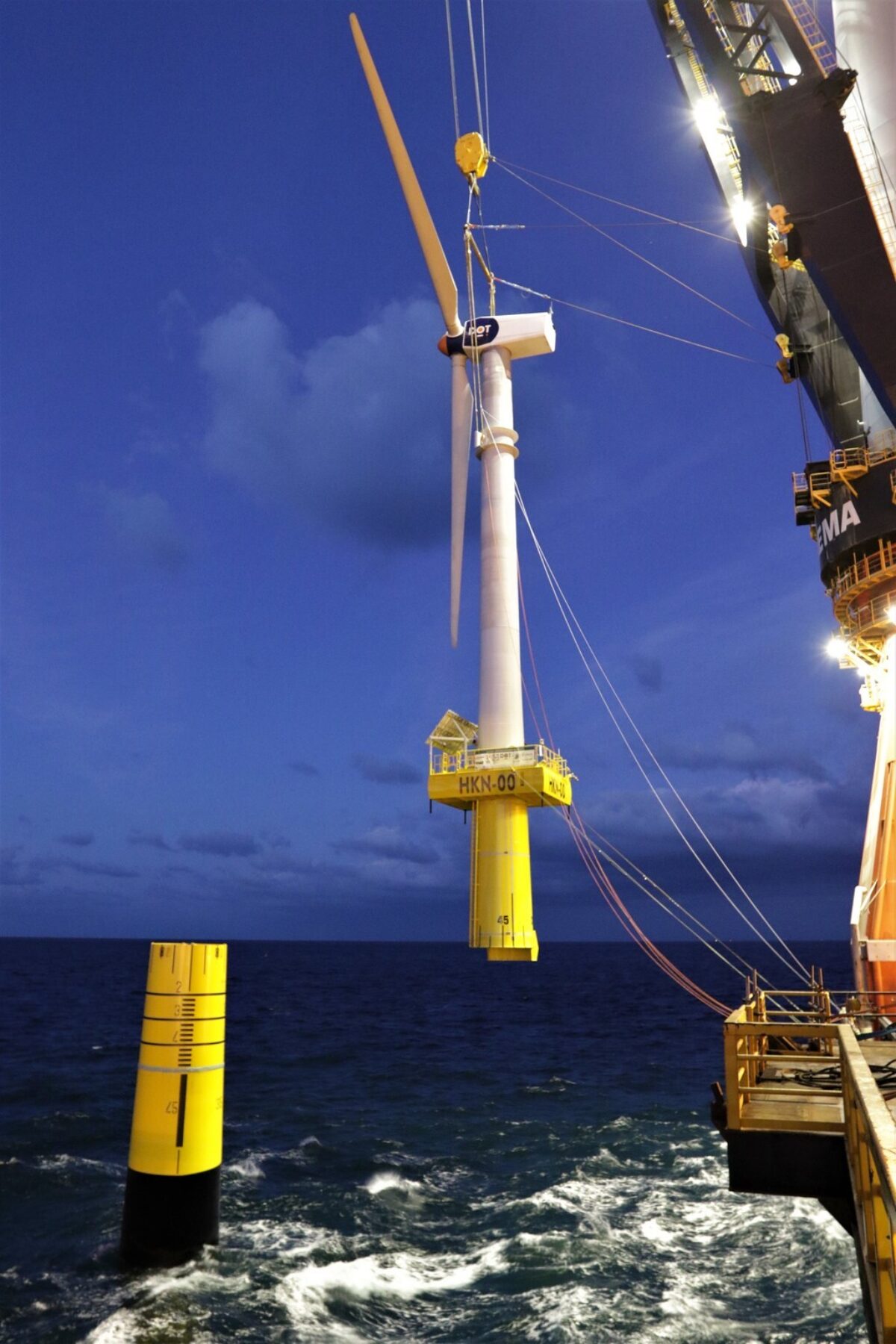
First offshore wind turbine using the Slip Joint connection successfully installed
Slip Joint Offshore Research (SJOR)-consortium tests innovative connection offshore: successful, ready-to-use installation within the hour.
September 30th the DOT wind turbine was successfully installed on its previously installed monopile using a Slip Joint connection. The Slip Joint is an alternative connection between an offshore wind turbine and its foundation. It works and looks like two paper cups upside down stacked on top of each other. The connection is based on friction, where the weight ensures a firm and stable connection. The monopile with antifouling coating was manufactured by Sif and was installed earlier in May this year. Installation is done by simply sliding the wind turbine over the monopile without the use of grout or bolts. This simple mechanism allows for cost reduction in material, equipment & personnel as well as allowing for a shorter installation time. It is the first time a slip-joint connection is deployed offshore.
The DOT wind turbine is located in Eneco’s Princes Amalia Wind Park off the coast of IJmuiden, the Netherlands. The complete wind turbine was picked up in a single lift by Heerema’s DCV Aegir from the quay of Sif Rotterdam and transported towards its designated location. The installation was noticeably faster than usual installation. Jan van der Tempel, Director of DOT BV: “This offshore installation is a major milestone in the commercialisation of the Slip Joint. Although the connection is very simple it still took 15 years to get it offshore”. The wind turbine will stay offshore for a year to test and collect data regarding this innovative connection after which the gathered data will be processed and used for validating lab tests by both TU Delft and TNO.

The Slip Joint development underlines the challenges of implementing new technologies in the offshore wind energy sector and to help accelerate this process the GROW consortium was initiated in 2016. GROW represents 20 leading Dutch partners in offshore wind that have joined forces on research and development. David de Jager, Managing Director of GROW adds: “This step in the SJOR project marks a significant moment for the GROW consortium. Through intense cooperation and knowledge exchange between industry and research institutes we now see the Dutch offshore wind sector introduce new technologies faster. This will help to ensure the leading position of this sector, both in Europe and around the world”. This project is executed with subsidy of the Topsector Energie from the Ministry of Economic Affairs and Climate.

